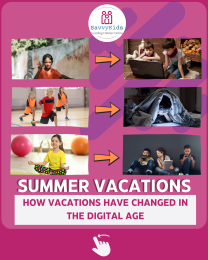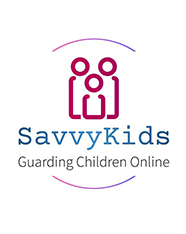
A New Era of Summer Fun Not long ago, summer meant dusty bike rides, impromptu games in the street, and hands-on adventures that taught children the value of physical effort. Today, however, many children find themselves ensnared by the allure of digital screens—spending hours scrolling through social media or binge-watching videos. The result is a noticeable shift: the tangible world seems to have lost its luster compared to the endless digital realm.
The Digital Summer Surge With the absence of school routines, summer break often translates into a significant uptick in screen time. Recent observations suggest that children are clocking in two extra hours—or more—of digital engagement each day. Instead of venturing out to explore their neighborhoods or learning new outdoor games, many are confined to their bedrooms or living rooms, fixated on smartphones and tablets. The vibrant, unpredictable play of yesteryear is increasingly being replaced by the steady, predictable glow of screens.
Shifting Realities: Screen vs. Reality This immersion in the digital world comes with a hidden cost. Consider this: two decades ago, an 11-year-old might have eagerly helped change a flat tire or used basic tools to fix household items. These hands-on experiences, though not aimed at turning them into mechanics, instilled a sense of accomplishment and practical understanding of the world. Today, few children can differentiate between an electric tester and a screwdriver. The instant gratification of digital interactions and the perpetual buzz of online notifications not only dull the appetite for real-world challenges but also erode the curiosity and creativity nurtured by physical activity and problem-solving.
The School Reopening Reality Check: When the structured environment of school resumes, the impact of a screen-dominated summer becomes starkly apparent. Students who have spent their vacations in a digital bubble may struggle to adjust to the slower pace of classroom interactions and hands-on learning. Teachers report decreased engagement and difficulties in concentrating during lessons—a direct consequence of an overreliance on the rapid-fire rewards of online content. The transition from a screen-filled summer to an environment that demands focus and sustained effort can be jarring for many young learners. Bridging the Digital Divide The onus is on parents to bridge this widening gap between digital and physical experiences. It starts with reintroducing structure into the summer schedule.
By establishing clear guidelines that balance screen time with offline activities, parents can help their children rediscover the joy of real-world interactions. Consider enrolling your child in a local sports camp, art class, or even simple DIY projects at home—activities that encourage them to use their hands and minds in ways digital media cannot replicate. Moreover, discussing the value of physical tasks and the satisfaction of solving real-world problems can spark a renewed interest in learning beyond the screen. Reclaiming Childhood Ultimately, the challenge lies in reclaiming the essence of childhood—a blend of digital savviness and hands-on, real-world engagement. While technology offers incredible opportunities, it is the tactile, lived experiences of outdoor play, creative projects, and face-to-face interactions that truly enrich a child’s development. With deliberate effort and open dialogue, parents can guide their children back to a balanced life—one where screens enhance rather than replace the myriad wonders of the physical world. By restoring this balance, we not only protect our children’s well-being but also ensure that the joys of real-life learning remain vibrant and enduring.
